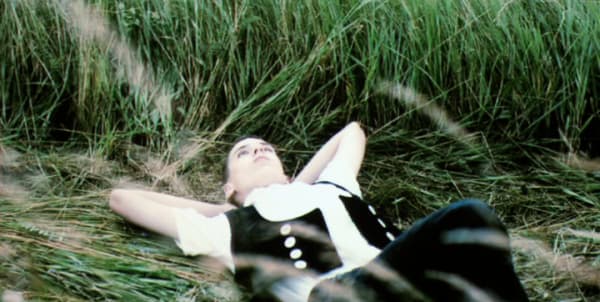Marcel Odenbach: In conjunction with Kimmerich Gallery, NY
December 23, 2010—In his sixth solo exhibition at Anton Kern Gallery, Marcel Odenbach asks a fundamental question, whether and how an event such as the holocaust can possibly be memorialized. The two works in the exhibition, a 16-minute video projection entitled “Turning Circles” in the main gallery and a single paper collage entitled “The Place is Brought Close to Us” in the back, initiate a dialogue from different angles of narrative and material.
Marcel Odenbach has been making moving image work for 35 years. Many of these have studied different problematical characteristics of German national culture and the national psyche, oftentimes exploring masculinity's relation to sublimated homosexuality and violence. Trained as an architect, there is an unmistakable structuralism present in Odenbachʼs videos and collages, as well as a fascination for buildings and space.
Turning Circles is principally a study of the Majdanek Mausoleum, one of two monuments designed by Polish sculptor Wiktor Tolkin, erected on the site of the Lublin Concentration Camp (known as the "Majdanek" camp). Built in 1969 to mark the 25th anniversary of the camp's liberation, the hulking concrete structure looks like the work of a Futurist architect from an earlier-age or one of the follies designed by the 18th-century French visionary architect Etienne-Louis Boullée. Famously, it stands on the pathway to the camp's crematorium and it supposedly contains ashes of the victims. Odenbach's eeriely slow-circling camera and extreme close-ups produce a feeling of unsteadiness and evoke the unease associated with visiting sites such as this one. The two boys who lark-about the space casually engage in a dialogue about the purpose and effectiveness of historical monuments and eventually imagine blowing it up.
The Place is Brought Close to Us is based on an image the artist obtained from the Gallus Haus archive in Frankfurt, Germany, the former location of the Frankfurt Auschwitz trials of 1964-1965. Under German penal law, 22 defendants were charged for their roles in the Holocaust as mid- to lower-level officials in the Auschwitz-Birkenau death and concentration camp complex. Defendants ranged from members of the SS to kapos, and included some of those responsible for the process of "selection," or determination of who should be sent to the gas chambers directly from the "ramp" upon disembarking the trains. In the course of the trial, approximately 360 witnesses were called, including around 210 survivors. The collaged picture depicts the black-robed State Attorney General in front of a map of the camp and is made up of numerous details of newspaper and archival images of the period that have meticulously been cut out, dyed, and pasted onto the outlined paper support.







